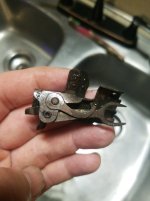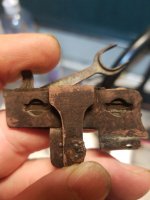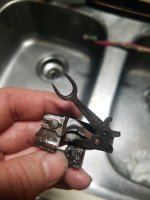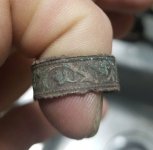Tom Slikes53
Full Member
- Jul 12, 2017
- 104
- 166
- Primary Interest:
- All Treasure Hunting
I found this at an old foundation, also found 4 pennies, 1919,1911,1909 and 1903.My guess is it's some speciaty tool for a craftsman. Also this ring, says 8k
Attachments
Upvote
13









